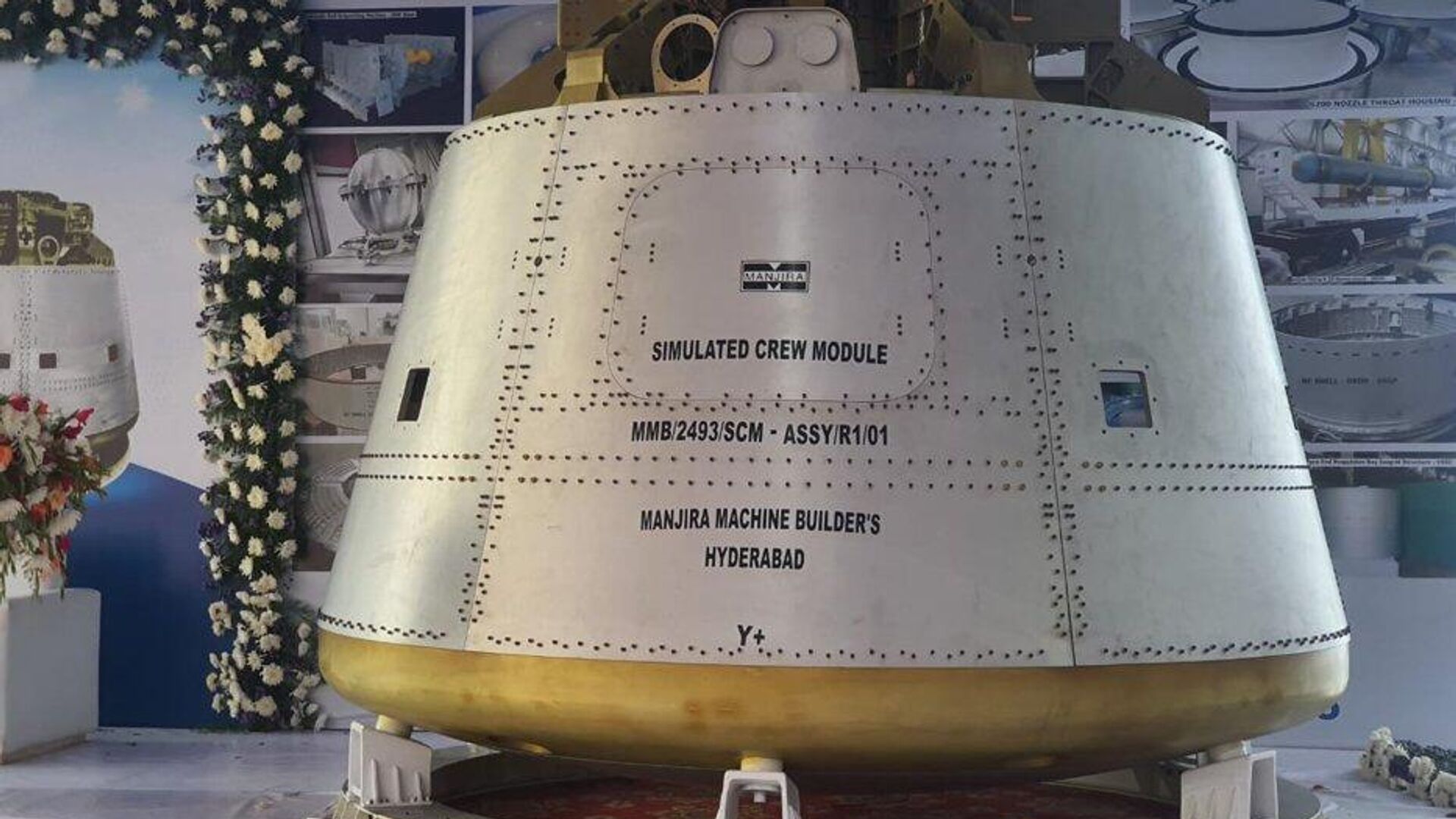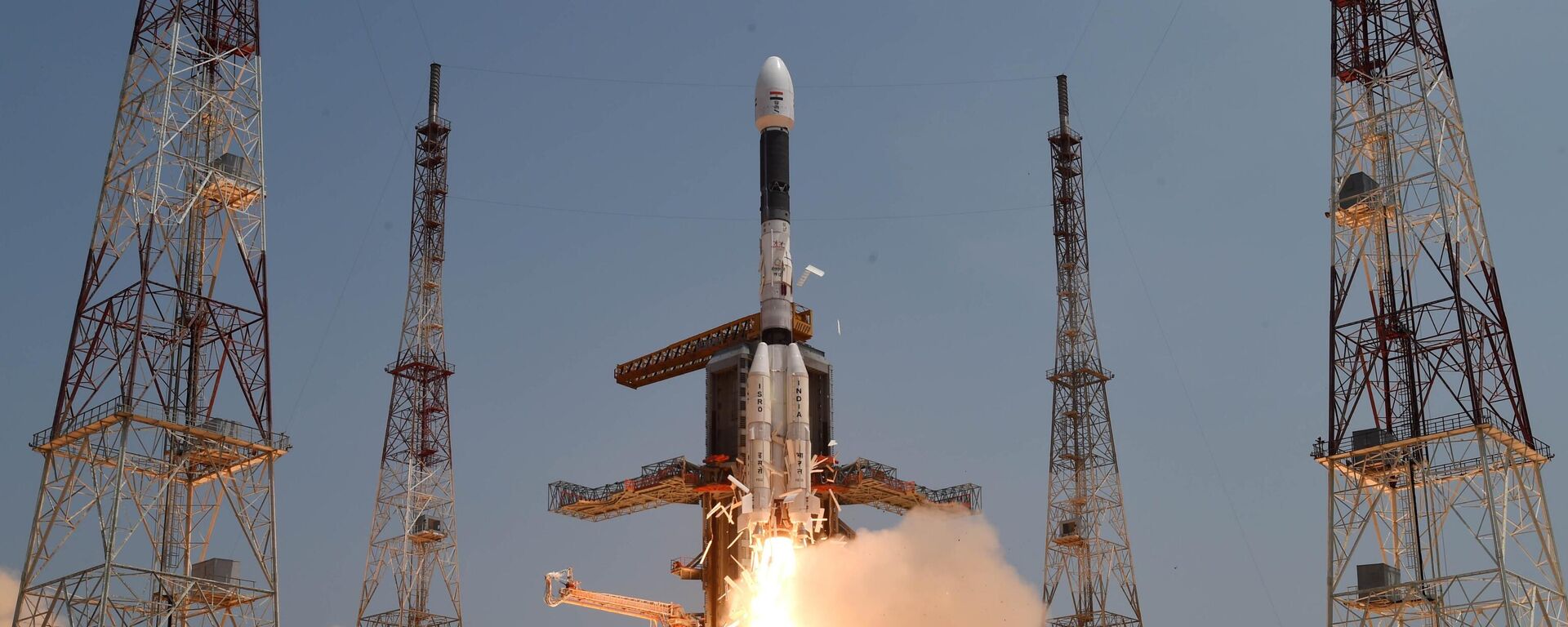https://sputniknews.in/20230609/safety-first-in-gangayaan-mission-isro-chief-wont-rush-sending-humans-to-space-2412785.html
Safety First in Gangayaan Mission: ISRO Chief Won't Rush Sending Humans To Space
Safety First in Gangayaan Mission: ISRO Chief Won't Rush Sending Humans To Space
Sputnik India
ISRO chief S Somanath has said the country will not rush to meet the deadline in the flagship Gangayaaan mission as it wants to ensure that its first human space flight is a "sure shot safe mission."
2023-06-09T19:00+0530
2023-06-09T19:00+0530
2023-06-09T19:00+0530
science & tech
india
indian space research organisation (isro)
space satellite
space industry
space exploration
space rocket
polar satellite launch vehicle (pslv)
https://cdn1.img.sputniknews.in/img/07e7/06/09/2413779_0:88:933:613_1920x0_80_0_0_288f96afe2525ceba7107b83dacb2548.jpg
Indian Space Research Organisation (ISRO) chief S Somanath has said the country will not rush to meet the deadline in the flagship Gangayaaan mission as it wants to ensure that its first human space flight is a "sure shot safe mission."The ISRO chairman was speaking on the sidelines of an international conference on Spacecraft Mission Operations (SMOPS-2023) on Thursday.He further informed that there are eight major tests for a human-crewed space flight, and if all major tests happen successfully without any glitches, then the launch could happen in a 2024 time frame. To the contrary, the flight will be delayed."This means that whenever there is a problem in the mission, we have to test and see that the crew is saved. The first of the test missions is going to be in August. We wanted to do it in July, but the first missions have difficulty meeting the schedule," Somanath said.Explaining the reason behind the delay of the Gangayaan, the ISRO chairman said: "Due to the pandemic, the production launch was delayed. We had to engineer it and work with industry, so it was not possible for one and a half years. So we missed the schedule. We could not align the program with the Amrit Mahotsav (75 years of independence)."Tata to Partner With ISRO to Develop Crew Recovery Models for GaganyaanTata Elxsi, a leading global engineering company, has partnered with ISRO to design and develop the crew module recovery models (CMRM) for the team training of the Gangayaan."Tata Elxsi has carried out the design and delivered hardware meeting a highly challenging delivery schedule of six months, demonstrating excellent program management skills. This has enabled the timely commissioning of recovery training exercises to meet Gaganyaan mission requirements. ISRO would like to partner in future for different projects," said Dr. Umamaheshwaran, director-HSFC, ISRO, reported The Mint.In a seperate mission, the ISRO will attempt to land a rover on the surface of the Moon in mid-July by launching the Chandrayaan-3 mission. With Chandrayaan-3, India plans its second attempt to for a Moon landing. On September 2019, the Chandrayaan-2 mission's Vikram lander crashed into the moon late in the landing process, although the accompanying orbiter was still at work studying the moon from a distance.Earlier, ISRO told reporters that it had moved the Chandrayaan-3 satellite from the U R Rao Satellite Centre to the Satish Dhawan Space Centre in Sriharikota, Andhra Pradesh, using the advanced Launch Vehicle Mark-III (LVM3).The rocket integration will happen by this month's end and the rocket will be fully ready by the beginning of July, the ISRO chief added.
https://sputniknews.in/20230530/indian-moon-mission-chandrayaan-3-to-be-launched-in-july-2023-isro-chief-2232842.html
https://sputniknews.in/20230529/mission-accomplished-isro-successfully-launches-next-gen-navigational-satellite---2223054.html
india
Sputnik India
feedback.hindi@sputniknews.com
+74956456601
MIA „Rossiya Segodnya“
2023
Deexa Khanduri
https://cdn1.img.sputniknews.in/img/07e6/0c/13/138923_52:0:533:481_100x100_80_0_0_cadf23d341691fc65ff2b22fd1afe584.jpg
Deexa Khanduri
https://cdn1.img.sputniknews.in/img/07e6/0c/13/138923_52:0:533:481_100x100_80_0_0_cadf23d341691fc65ff2b22fd1afe584.jpg
News
en_IN
Sputnik India
feedback.hindi@sputniknews.com
+74956456601
MIA „Rossiya Segodnya“
Sputnik India
feedback.hindi@sputniknews.com
+74956456601
MIA „Rossiya Segodnya“
Deexa Khanduri
https://cdn1.img.sputniknews.in/img/07e6/0c/13/138923_52:0:533:481_100x100_80_0_0_cadf23d341691fc65ff2b22fd1afe584.jpg
gangayaan mission, gangayaan, s somanath, spacecraft mission operations, smops-2023, chandrayaan 3, chandrayaan 2 mission's vikram lander, satish dhawan space centre, tata to partner with isro to develop crew recovery models for gaganyaan, tata elxsi, crew module recovery models, cmrm, dr umamaheshwaran,
gangayaan mission, gangayaan, s somanath, spacecraft mission operations, smops-2023, chandrayaan 3, chandrayaan 2 mission's vikram lander, satish dhawan space centre, tata to partner with isro to develop crew recovery models for gaganyaan, tata elxsi, crew module recovery models, cmrm, dr umamaheshwaran,
Safety First in Gangayaan Mission: ISRO Chief Won't Rush Sending Humans To Space
Deexa Khanduri
Sputnik correspondent
India's indigenous Gangayaan mission, which will be the first human-crewed mission of its kind from Delhi, aimed to send a three-member crew to space for five to seven days by 2022 when India completed 75 years of independence. However, the project got delayed due to many reasons.
Indian Space Research Organisation (ISRO) chief S Somanath has said the country will not rush to meet the
deadline in the flagship Gangayaaan mission as it wants to ensure that its first human space flight is a "sure shot safe mission."
The ISRO chairman was speaking on the sidelines of an international conference on Spacecraft Mission Operations (SMOPS-2023) on Thursday.
He further informed that there are eight major tests for a human-crewed space flight, and if
all major tests happen successfully without any glitches, then the launch could happen in a 2024 time frame. To the contrary, the flight will be delayed.
"This means that whenever there is a problem in the mission, we have to test and see that the crew is saved. The first of the test missions is going to be in August. We wanted to do it in July, but the first missions have difficulty meeting the schedule," Somanath said.
Explaining the reason behind the delay of the Gangayaan, the ISRO chairman said: "Due to the pandemic, the production launch was delayed. We had to engineer it and work with industry, so it was not possible for one and a half years. So we missed the schedule. We could not align the program with the Amrit Mahotsav (75 years of independence)."
Tata to Partner With ISRO to Develop Crew Recovery Models for Gaganyaan
Tata Elxsi, a leading global engineering company, has partnered with ISRO to design and develop the crew module recovery models (CMRM) for the team training of the Gangayaan.
"Tata Elxsi has carried out the design and delivered hardware meeting a highly challenging delivery schedule of six months, demonstrating excellent program management skills. This has enabled the timely commissioning of recovery training exercises to meet Gaganyaan mission requirements. ISRO would like to partner in future for different projects," said Dr. Umamaheshwaran, director-HSFC, ISRO, reported The Mint.
In a seperate mission, the ISRO will attempt to land a rover on the surface of the Moon in mid-July by launching the Chandrayaan-3 mission.
With Chandrayaan-3, India plans its second attempt to for a Moon landing. On September 2019, the Chandrayaan-2 mission's Vikram lander crashed into the moon late in the landing process, although the accompanying orbiter was still at work studying the moon from a distance.
Earlier, ISRO told reporters that it had moved the Chandrayaan-3 satellite from the U R Rao Satellite Centre to the Satish Dhawan Space Centre in Sriharikota, Andhra Pradesh, using the advanced Launch Vehicle Mark-III (LVM3).
The rocket integration will happen by this month's end and the rocket will be fully ready by the beginning of July, the ISRO chief added.




